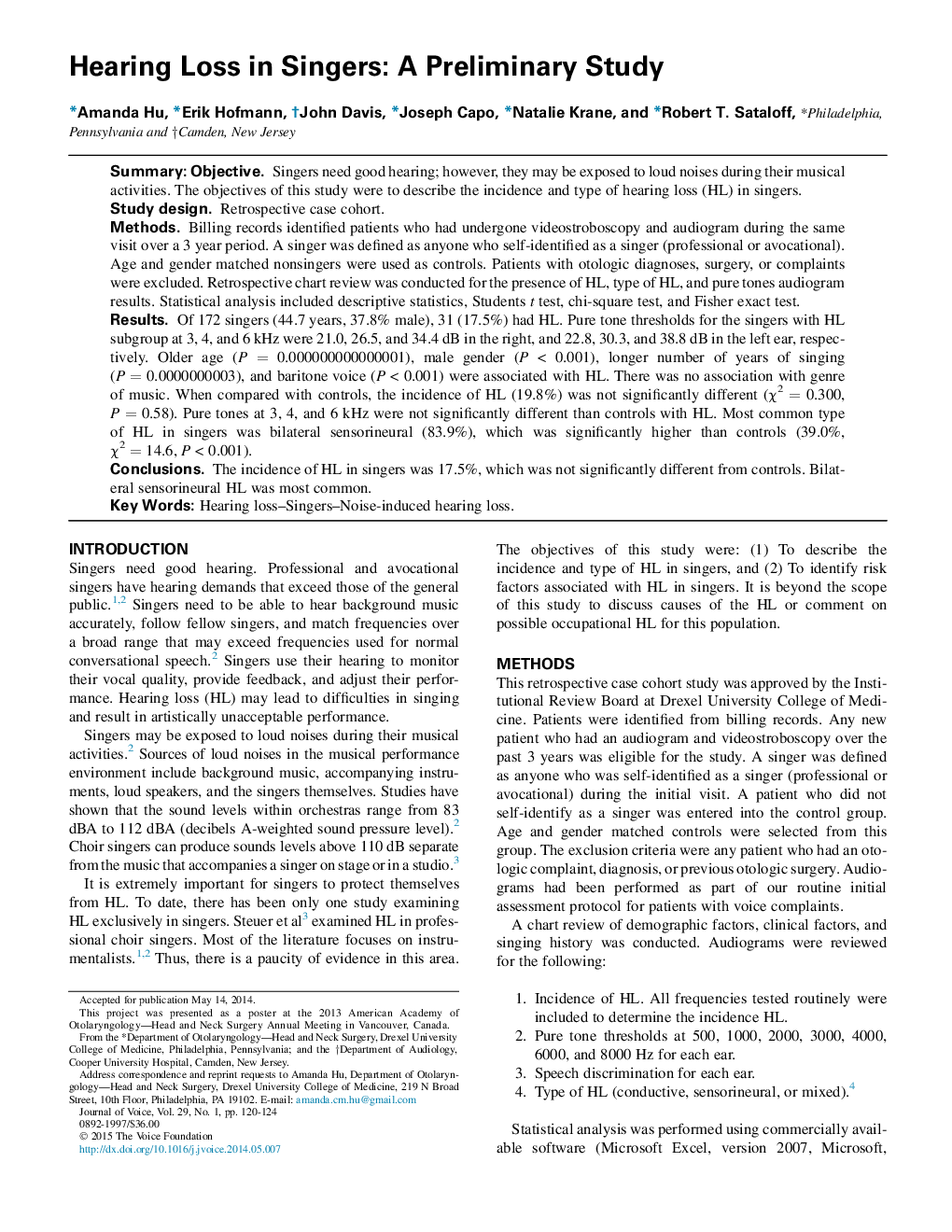| Article ID | Journal | Published Year | Pages | File Type |
|---|---|---|---|---|
| 1101513 | Journal of Voice | 2015 | 5 Pages |
SummaryObjectiveSingers need good hearing; however, they may be exposed to loud noises during their musical activities. The objectives of this study were to describe the incidence and type of hearing loss (HL) in singers.Study designRetrospective case cohort.MethodsBilling records identified patients who had undergone videostroboscopy and audiogram during the same visit over a 3 year period. A singer was defined as anyone who self-identified as a singer (professional or avocational). Age and gender matched nonsingers were used as controls. Patients with otologic diagnoses, surgery, or complaints were excluded. Retrospective chart review was conducted for the presence of HL, type of HL, and pure tones audiogram results. Statistical analysis included descriptive statistics, Students t test, chi-square test, and Fisher exact test.ResultsOf 172 singers (44.7 years, 37.8% male), 31 (17.5%) had HL. Pure tone thresholds for the singers with HL subgroup at 3, 4, and 6 kHz were 21.0, 26.5, and 34.4 dB in the right, and 22.8, 30.3, and 38.8 dB in the left ear, respectively. Older age (P = 0.000000000000001), male gender (P < 0.001), longer number of years of singing (P = 0.0000000003), and baritone voice (P < 0.001) were associated with HL. There was no association with genre of music. When compared with controls, the incidence of HL (19.8%) was not significantly different (χ2 = 0.300, P = 0.58). Pure tones at 3, 4, and 6 kHz were not significantly different than controls with HL. Most common type of HL in singers was bilateral sensorineural (83.9%), which was significantly higher than controls (39.0%, χ2 = 14.6, P < 0.001).ConclusionsThe incidence of HL in singers was 17.5%, which was not significantly different from controls. Bilateral sensorineural HL was most common.
